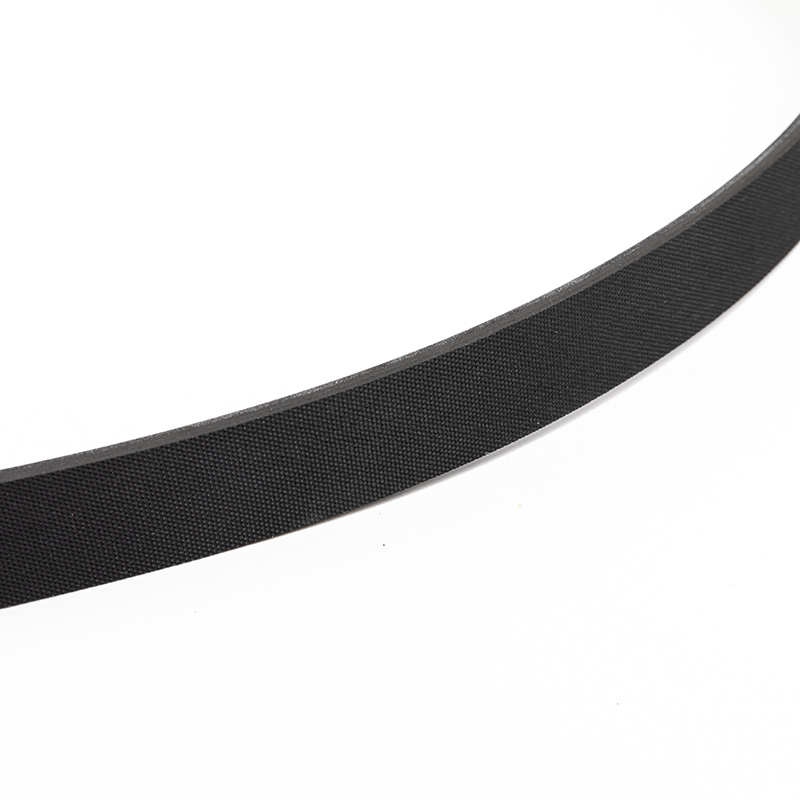Resolving squealing or squeaking sounds from the automotive V-ribbed belt area typically involves identifying the root cause and taking appropriate corrective measures. Here are steps you can take to address such noises:
Inspect the Belt for Wear or Damage: Conduct a meticulous examination of the entire V-ribbed belt, scrutinizing it for any subtle signs of wear, such as surface cracks, fraying along the edges, or glazing that might indicate overheating. If there are any noticeable imperfections, including belt separation, it is imperative to promptly replace the belt with a high-quality, OEM-recommended alternative.
Check Belt Tension: Delve into your vehicle's manual to ascertain the precise tension specifications for the V-ribbed belt. Employ a reliable tension gauge to minutely measure the tension, ensuring it aligns with the manufacturer's recommendations. Over-tightening can lead to accelerated wear on the belt and associated components, while inadequate tension may result in slippage, both contributing to premature wear and the aggravating high-pitched squeal.
Inspect Belt Alignment: Scrutinize the alignment of the V-ribbed belt on each pulley with precision. Misalignment not only accelerates wear but also induces uneven wear patterns, amplifying noise. If misalignment is detected, devote time to precisely readjust the belt, ensuring it seats perfectly on all pulleys. Simultaneously, meticulously inspect each pulley for any irregularities that may be contributing to alignment issues.
Examine Pulleys for Damage: Perform a comprehensive examination of every pulley within the system. Look for visible signs of damage, such as grooves, chips, or corrosion. Damaged pulleys compromise the smooth operation of the belt, exacerbating noise issues. Promptly replace any suspect pulleys to maintain optimal performance and mitigate the risk of prolonged noise-related damage.
Check for Contaminants: Leave no stone unturned in inspecting the V-ribbed belt and pulleys for any signs of contamination. Oil, grease, or other substances can significantly reduce friction, leading to slippage and generating noticeable noise. Employ a potent degreaser to meticulously clean the belt and pulleys, creating a pristine, contaminant-free environment conducive to optimal belt performance.
Consider Belt Dressing: While belt dressings can provide a temporary reprieve from squealing, exercise caution in their usage. Recognize that this is a short-term solution, not a panacea for the underlying problem. Apply belt dressing sparingly, with the understanding that it serves as a temporary mitigation rather than a permanent fix. Always prioritize addressing the root cause to prevent recurring noise issues.
Inspect Belt Tensioner: Direct your attention to the V-ribbed belt tensioner, subjecting it to a thorough inspection. Look for visible signs of damage, corrosion, or wear. A faulty tensioner can compromise tension consistency, contributing to belt noise. If necessary, replace the tensioner promptly to restore optimal belt tension and mitigate noise-related concerns.
Evaluate Ambient Conditions: Take into account the environmental conditions in which your vehicle operates. Extreme temperatures can exert varying effects on the performance of V-ribbed belts. If the noise is more pronounced during specific weather conditions, explore options for belts specifically designed to withstand those environments, ensuring longevity and sustained quiet operation.
Verify the Condition of Other Engine Accessories: Extend your investigation beyond the V-ribbed belt itself to encompass the engine accessories it powers. Conduct a comprehensive assessment of the alternator, water pump, power steering pump, and other components. Any irregularities in these accessories can manifest as noise in the belt area, necessitating timely attention to preserve the overall health and functionality of the system.
Automotive V-Ribbed Belts


 View More >>
View More >>
 View More >>
View More >>
 View More >>
View More >>
 View More >>
View More >>
 View More >>
View More >>
 View More >>
View More >>
 View More >>
View More >>
 View More >>
View More >>
 View More >>
View More >>
 View More >>
View More >>
 View More >>
View More >>
 View More >>
View More >>